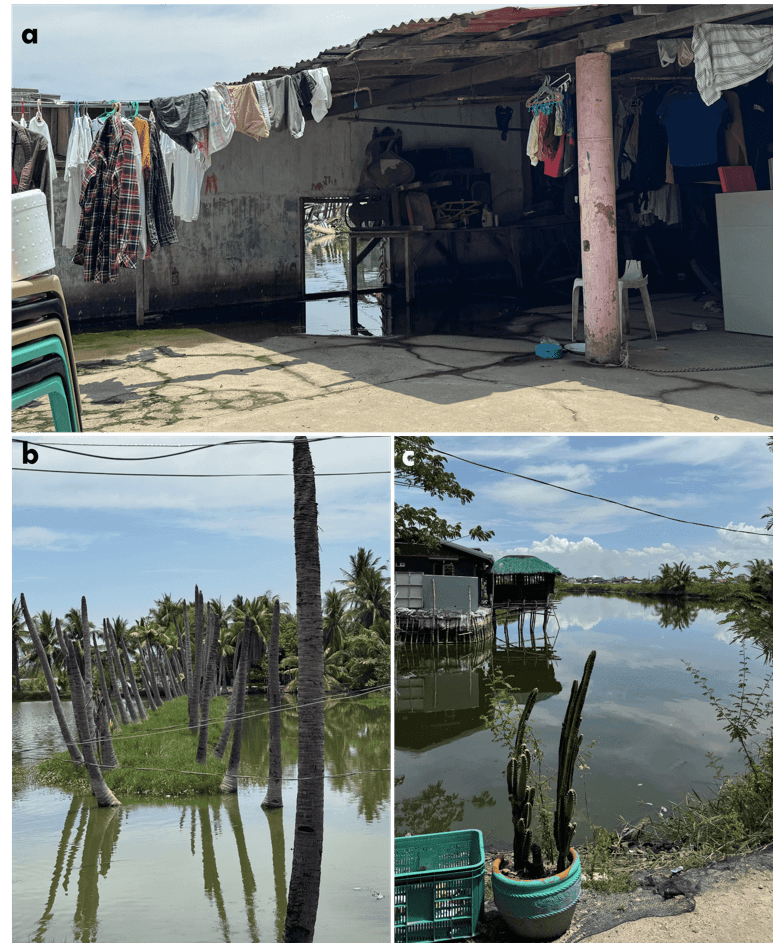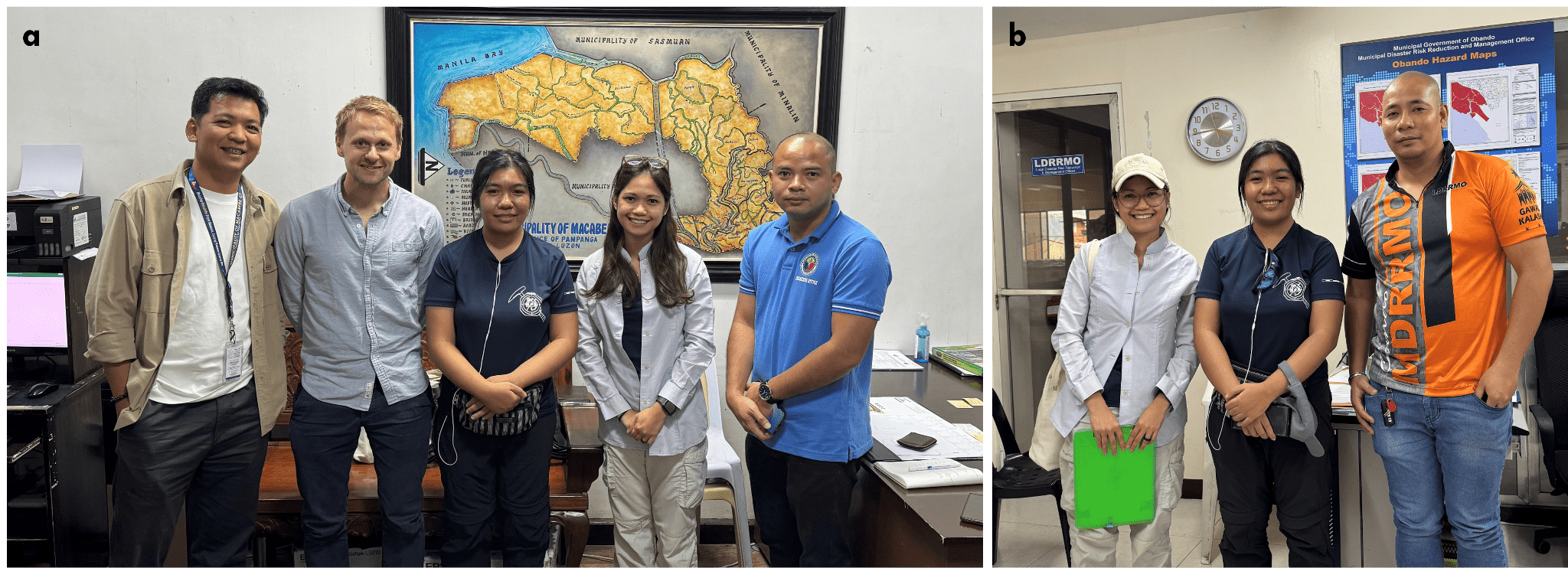Posted by Hazard Assessment Team of UPRI NOAH Center
On 21 May 2025, researchers from the UPRI-NOAH Hazard Assessment Team (HAT) conducted fieldwork to investigate the effects of land subsidence in Macabebe, Pampanga. Ms. Jolly Sulapas and Ms. Julian Grageda, members of the UPRI-NOAH HAT, accompanied Dr. Felix Lill, a German international journalist and author with over a decade of experience in international reporting, particularly in Japan and East Asia. His work spans politics, economics, and social issues and has been featured in major German and international outlets. He holds a PhD in public policy, with a focus on aging societies in Germany and Japan, and works in multiple languages, including German, English, Spanish, and Japanese.

Dr. Lill interviewed residents, collecting personal stories about the history of subsidence in the area and its profound impact on their daily lives. Locals shared experiences of enduring permanent inundation in their neighborhoods, where sinking ground steadily submerged residential structures over the years and transformed once-productive farmlands into fish ponds. These manifestations highlight the stark realities faced by communities, who now contend with compromised living conditions and the growing threat of displacement as the land beneath them continues to sink and water encroaches further into their homes and livelihoods.


The team also visited the Municipal Disaster Risk Reduction and Management Office (MDRRMO) in Obando, a coastal municipality of the Province of Bulacan. A recent study by the UPRI-NOAH HAT delineated several subsiding zones in the province, such as in the Guiguinto-Balagtas-Bulakan area and in the Bocaue-Marilao area; both of these areas are adjacent to Obando. In addition, it is located close to Sitio Pariahan in Bulakan, where severe signs of subsidence were documented by news articles and documentaries.
The study significantly contributes to raising awareness about the long-term social, environmental, and economic effects of land subsidence. It collects important data through field observations and community interviews, aiding in more accurate risk assessments and hazard mapping. The results offer practical guidance for local governments in planning and implementing mitigation strategies. The field investigation with Dr. Lill brings global attention to a local issue, encouraging broader support and collaboration.

